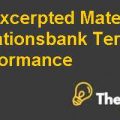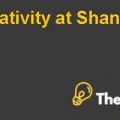Grantham Mayo Van Otterloo& Co Case Study Solution
What has been the performance of Grantham, Mayo, Van Otterloo (GMV) in the five years since 1996?
The period of 1996 and ahead was the period of under performance for GMO and it was because the models of the company showed that the equity of the company was somewhat expensive internationally and domestically. GMO did not see any kind of future crash but it expected that the future stock market returns would be disappointing. The sectors of the company that offered high dividends had suffered significantly when the market had become aware of the fact hat FED would raise the rates of interest in the market.
Because of the news of the rising interest rates, the funds had underperformed the market. GMO’s performance in the international stocks had also declined in 1996. In the second quarter of 1996, based on the contrarian value investing model it had failed so badly as compared to the historical data available to the company. The European equity markets had become more expensive and it overvalued the US equity markets.
All the international trends were similar, the investors had withdrawn around $ 3 billion in 1996 from the assets, and they claimed that GMO was not able to get it right. In the year 1999, the performance had declined further and the S&P 500 was trading at twice of the replacement cost and the PE ratio of 34. The earnings to price ratio was half at 2.9% when compared to the US treasury bonds fixed rate of 5.5% and the yield on the inflation indexed T-bills of 3.9%. The net client’s deposits performance had also been worsening since 1996 as shown in exhibit 1 in the appendices.
None of the analysts of GMO and even Grantham believed that the company could maintain the high PE ratio. During the year 1994, almost all of the GMO funds were behind the benchmarks and they had been underperforming in 58% of the product years since the last 5 years. One partner had stated that if the clients looked at the current results of GMO then they might fear that they have committed a breach of the fiduciary duty by retaining us.
The Global Balanced Asset Allocation (GBAA) was the hardest hit by the bearish views on the equities. GBAA held around less than 1/3 rd of the equities as compared to the benchmark and this was a major mistake as the equities were delivering around 20% and even more per annum. There were also two crises during the past three years and GBAA had suffered because of these in the emerging markets. Fixed income was trading at the normal valuations and thus it became too over weighted. Because of all of these factors, GBAA was 20% behind the simple low cost approach to indexing with the benchmark over the last four years.
If we look at exhibits 12A, 12B and 12C then we can see the decline of the percentage value added by the GMO funds in 2001. All the domestic equity funds have been underperforming as compared to the benchmarks. Similar, is the case with the international equity, fixed income and the asset allocation funds. The situation was even worse in the 2000s as seen in exhibit 12B. This performance when compared to the 1994 performance shows that GMO has been underperforming after 1996 and its performance over the next 5 years has been devastating.
Question 2
Describe the portfolio management style being employed by GMO.
The portfolio management style employed by GMO was based on the mean reversion strategy of the company. Using this approach to portfolio management, the managers of GMO looked at the trends of the asset valuation over the entire history and they used it as the basis for determining the fair value of the fund assets. GMO has identified a consistent pattern within all the historical trends. All the asset classes have average values and these values do not change over the long term.
The valuation may go up and down but they come down to the same mean. As the firm sees the market through this mean reversion, therefore, they can identify where the bubbles are forming and where is the risk of the burst. The managers of GMO look out to invest in the cheap and low risk assets they are more likely to perform better as the bubbles form and easy to get out before any thing negative is about to happen.
The quantitative group of the company had made investment decisions based on the integrated process under which the securities were scored based on their performance in the past period and then the portfolios are constructed for minimizing the volatility of the returns and maximizing the expected returns. The active experience of the firm was codified in the form of investment rules to determine all those factors that dominated the security returns..............
This is just a sample partial work. Please place the order on the website to get your own originally done case solution.









